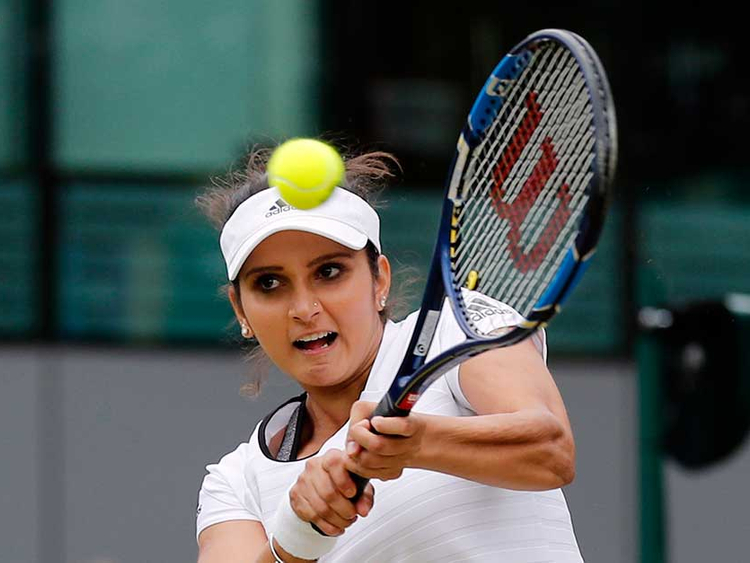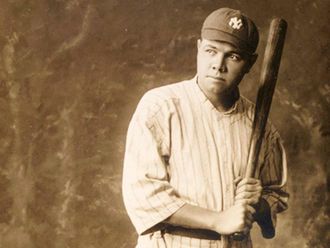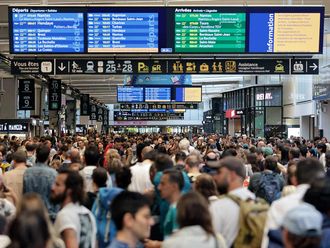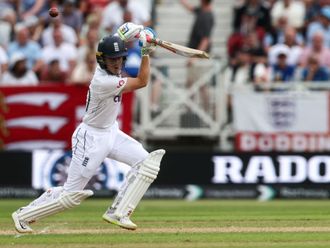
Rio de Janeiro: Sania Mirza, one of the main draws in the Indian challenge in Rio 2016, is making her presence felt as she was the first tennis player to check into the Olympics Village in Rio on Tuesday.
The Mirza and Martina Hingis combination had started taking the women’s circuit by storm for the past two years, though she will have to shoulder the extra responsibility when she partners young Prarthana Thombare in the women’s doubles at the Games and will play with Rohan Bopanna in the mixed doubles. The women’s doubles begins on August 6 and mixed doubles on August 10.
Last month, the publishers of Mirza’s autobiography ‘Ace Against Odds’ showed a fine sense of occasion by releasing the book in a star-studded gathering in early July – ostensibly as a countdown to the Games. Speaking on the eve of her departure for Rio in India, Mirza opened up in a freewheeling conversation on what prompted her to write the book, what she found most difficult to pen and other key revelations.
Following are the excerpts:
You are not yet 30 and you are still playing. Why write an autobiography when your story is still unfinished?
I think I owed this to myself, my family and my fans. A lot has been written about me and on me, but this is my side of the story. It needed to be told. To be out there. People deserve to know and I think that’s what prompted me to write it.
So what is in the book that we don’t know? As said you are one of the more written about stars in India. What was unsaid?
First, all that was said was by others. I never got to say it all. This is my version. For example it was very difficult for me to talk about Shoaib. How did we meet? Where? How did it all happen? To reveal that my family and his in fact were concerned about our nationalities.
I have also given my readers a peek into our lives, how we manage our sporting careers and still try to spend as much time as possible – mostly in Dubai, the city we have chosen as our home base given its proximity to both India and Pakistan.
For the first time I have mentioned that I was conscious of the fact that Shoaib belonged to a country that had serious political differences with us. But I had grown up on the tennis circuit where I had shared close friendships over the years with people of diverse religions, races and backgrounds from different countries across the globe. I think the experience had broadened my horizons to the extent that I could comfortably embrace relationships on a personal level beyond these constraints. As athletes, you forget such boundaries.
Interesting. And how did the love affair develop? Have you written about one of modern sports’ most talked about love stories?
Yes, I have and as I said it was mighty difficult to do so because I am a very private person as you know in that sense. It was at Hobart in Australia when my father Imran, my trainer Len and I went to an Indian diner at the waterfront, a few hundred yards from the Old Woolstore Hotel where we were lodged for one of the tournaments leading up to the year’s first Grand Slam in 2009.
The Pakistan team was scheduled to play a Test match against Australia in a couple of days’ time and we were pleasantly surprised to find some of the players enjoying their dinner at the same restaurant. A little later Shoaib entered, looking for a table, and came towards the corner where we were sitting. He said hello to me and then approached our table to pay his respects to my father.
When Shoaib expressed interest in watching me play the next evening, I arranged some tickets for him. He came, accompanied by a couple of his teammates. After the match, my father invited the boys for dinner at the same Indian restaurant and while the others had a prior engagement, Shoaib accepted the offer.
Many months later, when we were finally married and enjoying a pleasant evening together, I asked him ‘Imagine if you hadn’t come to that restaurant that day. We would never have met.’ That’s when he told me it wasn’t entirely by chance that he had stepped into the restaurant in Hobart that fateful evening. One of his teammates, who was already in the restaurant, had called Shoaib to tell him I was dining there. Shoaib, who had earlier decided against eating out, came rushing. He said: I was determined to get your number.
You are unique in many ways. A young Muslim girl from Hyderabad at the top of world tennis. Winner of six Grand Slams. Do you think your story can inspire Indian youngsters going forward?
Look, I have tried to do things I loved doing and in doing so, pushed my limits. That’s what I want Indian youngsters to do. There is no reason why we can’t produce champions. I have written in the book that I find it disconcerting that we have produced only three Grand Slam champions in Leander, Mahesh and me.
Only three top 30 players in Vijay, Ramesh and me. It absolutely needs to change and I will do my best to change it. The Sania Mirza Tennis Academy was built by my family specifically for this reason and that’s what I will dedicate my life to doing in the years to come.
— The writer is a sports scholar and journalist based in India.












